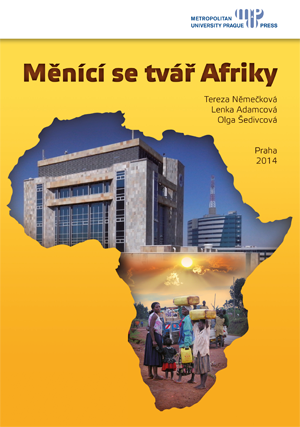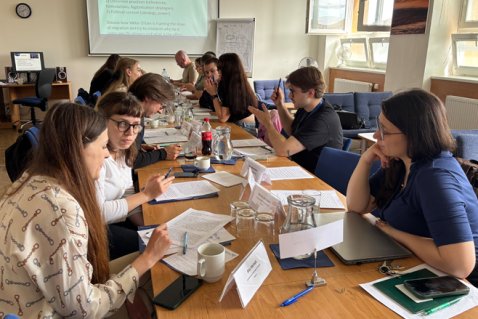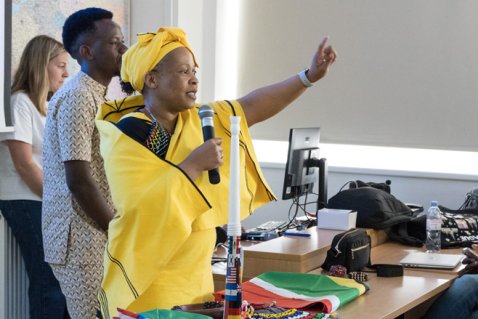NĚMEČKOVÁ, Tereza; ADAMCOVÁ, Lenka; ŠEDIVCOVÁ, Olga. Měnící se tvář Afriky.

1st ed. Prague: Metropolitan University Prague Press, 2014. 180 s. ISBN 978-80-87956-04-5
For a long time Africa has been perceived as a continent full of poverty, hunger and misery. A few years ago the global media started reporting about the "new Africa", continent full of hope and potential. This book attempts to answer what happened in the meanwhile, mainly in the economic and socio-economic field. It focuses on the transformation process in the period from 2000 and onwards. It analyses the rising middle class and assesses the attributes of the "new African consumer". The last part emphasizes the importance of new technologies in Africa's recent development by analyzing the mobile phones market penetration and internet access in the region and by focusing on the new phenomenon – the mobile money and its impacts on local people and local economies.
In terms of its economic output, the performance of most African countries in the selected period has been rather astonishing. The real GDP and GDP per capita rose steadily in most countries, though the economic growth has been mostly driven by the external demand for Africa's natural resources. Unfortunately, despite these economic outcomes, most African countries did not manage to enhance development of the manufacturing industry, or the service sector, which is crucial for its sustainable development. There is also a persisting problem of the low labour effectiveness and in many countries also the existence of a huge informal sector.
In terms of its socio-economic development, Africa significantly improved the poverty headcount ratio at 1,25 USD/day, nevertheless, due to significant increase in the number of total population, the total amount of people living under this poverty line increased. Fortunately, the poverty gap decreased, too, meaning that on average the poor people in Africa have become less poor than before. To the contrary, the income inequality has increased in Africa, mainly in the richest countries in the South.
All these changes in economic and socio-economic area led to the increase in the number of people who can be classified as the African middle class. African Development Bank's research estimates that around 326 million of Africans today rank among the middle class. This number has increased significantly since 2000. Nevertheless, we cannot overlook the fact that the majority of them (60 percent) earn between 2-4 dollar/day only, meaning that their purchasing parity is still rather low. But their demand for goods and services is on the rise, which has already been observed by global companies. Therefore, a new category of the "a New African consumer" has been constructed.
The latest development in access to internet and new media such as mobile phones or tablets has also reached the African continent and most probably helped to enhance its development. Even though the mobile phones' market penetration in Africa still belongs to the lowest in the world, and most of Africans still lack access to internet, the potential is huge, which only corresponds with the fact that Africa as a whole ranked among the most dynamic markets in the world in terms of the new mobile phone subscribers in the last couple of years. Africans do not use the phone as a means of communication only, but with accelerating speed they use it also as a mobile wallet. The phenomenon of the mobile money is hardly to be seen in such an amount around the world. The Kenyan application called M-Pesa has become a symbol of the innovation that the mobile money have brought to local people. As the book has shown, it has already influenced and improved lives of millions of people in Africa, including traditional tribes, such as Masai.



